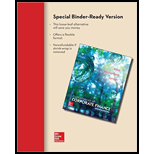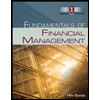
Dividends and Taxes [LO2] As discussed in the text, in the absence of market imperfections and tax effects, we would expect the share price to decline by the amount of the dividend payment when the stock goes ex dividend. Once we consider the role of taxes, however, this is not necessarily true. One model has been proposed that incorporates tax effects into determining the ex-dividend price:9
where P0 is the price just before the stock goes ex, PX is the ex-dividend share price, D is the amount of the dividend per share, TP is the relevant marginal personal tax rate on dividends, and TG is the effective marginal tax rate on
a. If TP = TG = 0, how much will the share price fall when the stock goes ex?
b. If TP = 15 percent and TG = 0, how much will the share price fall?
c. If TP = 15 percent and TG = 30 percent, how much will the share price fall?
d. Suppose the only owners of stock are corporations. Recall that corporations get at least a 70 percent exemption from
a)
To determine: The fall in the value of share price when the stock goes ex-dividend, if
Introduction:
The two dates before the record date is termed as ex-dividend date. If the shareholder purchases the stocks on or before the ex-dividend date, then he is entitled to get the dividend payment; and if the shareholder purchases on or after the ex-dividend date, then he will not entitled to the next dividend payment rather the seller gets the payment.
The stocks will get the ex-dividend position if the person gets the dividends from the company.
Answer to Problem 14QP
Explanation of Solution
Given information:
The model to determine the ex-dividend price is
Where,
D is the dividend per share
Determine the fall in value of share price, if
Hence, the share value will fall by the amount of dividend D.
b)
To determine: The quantum fall in the share price, if
Answer to Problem 14QP
Explanation of Solution
Given information:
The model to determine the ex-dividend price is
Where,
D is the dividend per share
Determine the fall in value of the share price, if
Hence, the fall in value of the share price is 0.85 times of D.
c)
To determine: The quantum of fall in the share price, if
Answer to Problem 14QP
Explanation of Solution
Given information:
The model to determine the ex-dividend price is
Where,
D is the dividend per share
Determine the fall in value of share price, if
Hence, the fall in value of share price is 1.21428 times of D.
d)
To determine: The ex-dividend share price.
Answer to Problem 14QP
Explanation of Solution
Given information:
The corporation gets 70% exemption from the dividend income and is taxable on capital gains. The income and capital gains tax rates of corporation are 35%.
The model to determine the ex-dividend price is
Where,
D is the dividend per share
Determine the ex-dividend price using the above mentioned model:
Hence, the ex-dividend share price will be 1.3769 times of D.
e)
To discuss: The impacts of the given models on tax considerations and policy of the dividend.
Explanation of Solution
Every company will focus on a particular group of shareholders, according to their dividend distribution. If a company pays low dividend payouts, then it will concentrate on shareholders who prefer low dividend payout. If the company pays high dividend payouts, then it will attract shareholders who prefer high payouts. This effect is known as clientele effect.
Thus, this model determines various groups of investors that vary on the tax rates on ordinary income and capital gain. Different investors will have different tax implications.
Want to see more full solutions like this?
Chapter 17 Solutions
Fundamentals of Corporate Finance (Special Edition for Rutgers Business School)
- A bond pays a 6% annual coupon and is priced at a discount. What does this indicate? A) Yield to maturity < coupon rateB) Yield to maturity = coupon rateC) Yield to maturity > coupon rateD) Bond is at par need correct answer and explarrow_forwardWhich of the following best describes standard deviation in finance? A) A measure of liquidityB) A measure of returnC) A measure of volatilityD) A measure of leveragei need helparrow_forwardWhich of the following best describes standard deviation in finance? A) A measure of liquidityB) A measure of returnC) A measure of volatilityD) A measure of leverageneed helparrow_forward
- Which of the following best describes standard deviation in finance? A) A measure of liquidityB) A measure of returnC) A measure of volatilityD) A measure of leveragearrow_forwardA bond pays a 6% annual coupon and is priced at a discount. What does this indicate? A) Yield to maturity < coupon rateB) Yield to maturity = coupon rateC) Yield to maturity > coupon rateD) Bond is at par i needarrow_forwardA bond pays a 6% annual coupon and is priced at a discount. What does this indicate? A) Yield to maturity < coupon rateB) Yield to maturity = coupon rateC) Yield to maturity > coupon rateD) Bond is at par need helparrow_forward
- In CAPM, the risk-free rate increases. What happens to the expected return? A) IncreasesB) DecreasesC) Remains the sameD) Becomes negativearrow_forwardNo Chatgpt! What is the future value of $1,000 invested for 3 years at an annual interest rate of 5% compounded annually?arrow_forwardA bond pays a 6% annual coupon and is priced at a discount. What does this indicate? A) Yield to maturity < coupon rateB) Yield to maturity = coupon rateC) Yield to maturity > coupon rateD) Bond is at pararrow_forward
- I need correct answer In CAPM, the risk-free rate increases. What happens to the expected return? A) IncreasesB) DecreasesC) Remains the sameD) Becomes negativearrow_forwardIn CAPM, the risk-free rate increases. What happens to the expected return? A) IncreasesB) DecreasesC) Remains the sameD) Becomes negative helparrow_forwardWhat is the future value of $1,000 invested for 3 years at an annual interest rate of 5% compounded annually?need coarrow_forward
 Intermediate Financial Management (MindTap Course...FinanceISBN:9781337395083Author:Eugene F. Brigham, Phillip R. DavesPublisher:Cengage Learning
Intermediate Financial Management (MindTap Course...FinanceISBN:9781337395083Author:Eugene F. Brigham, Phillip R. DavesPublisher:Cengage Learning EBK CONTEMPORARY FINANCIAL MANAGEMENTFinanceISBN:9781337514835Author:MOYERPublisher:CENGAGE LEARNING - CONSIGNMENT
EBK CONTEMPORARY FINANCIAL MANAGEMENTFinanceISBN:9781337514835Author:MOYERPublisher:CENGAGE LEARNING - CONSIGNMENT Fundamentals of Financial Management (MindTap Cou...FinanceISBN:9781285867977Author:Eugene F. Brigham, Joel F. HoustonPublisher:Cengage Learning
Fundamentals of Financial Management (MindTap Cou...FinanceISBN:9781285867977Author:Eugene F. Brigham, Joel F. HoustonPublisher:Cengage Learning



